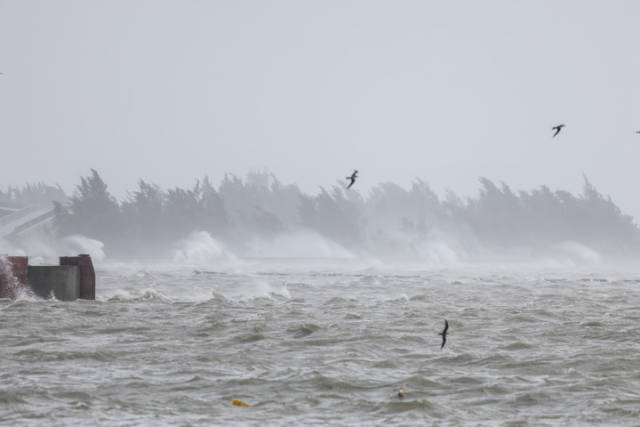The impact of Typhoon Rumbia (摩羯) on deep-sea aquaculture in Zhanjiang can be multifaceted, focusing primarily on physical damage, ecological impact, and economic losses. Below are the potential impacts and subsequent solutions:
I. Impacts
- Physical Damage
The strong winds and large waves brought by typhoons can severely damage deep-sea aquaculture infrastructure. Floating buoys, net cages, and anchoring systems may be overturned, damaged, or swept away by the waves, leading to fish escape or the complete collapse of the aquaculture operation. - Water Quality Deterioration
Typhoons can bring a large amount of land-based pollutants into the sea, resulting in water quality degradation. This includes sediment, pesticides, fertilizers, and other materials entering the aquaculture area, affecting water transparency and chemical composition. High concentrations of pollutants may lead to fish diseases and increase mortality rates. - Fish Escape and Mortality
Damage to net cages caused by the typhoon may lead to the mass escape of farmed fish or their death due to sudden changes in water conditions and decreased oxygen levels. High waves and rapid water turnover can induce stress reactions in farmed fish, reducing their immune system efficiency. - Economic Losses
Fish escape, mortality, and damaged aquaculture equipment directly result in economic losses, particularly in deep-sea aquaculture, which requires significant investment. Rebuilding facilities and restoring production would also require considerable time and financial input.
II. Subsequent Solutions
- Enhancing Facility Construction and Maintenance
Deep-sea aquaculture facilities should adopt typhoon-resistant designs, using more durable and corrosion-resistant materials to enhance the stability of net cages. For example, using materials that can withstand strong winds and large waves and reinforcing the anchoring systems, such as Haosail copper alloy cage net which will have much higher tensile strength than normal material to against the typhoon and waves . Regular inspection and maintenance before the typhoon season is also essential.
- Establishing Disaster Warning and Emergency Mechanisms
Utilize modern meteorological and ocean monitoring technology to establish a comprehensive typhoon warning system. Receiving accurate forecasts of typhoon paths and intensities a few days in advance can give farmers time to take emergency measures, such as securing or relocating net cages and increasing the density of farmed fish to minimize the area affected by the typhoon. - Emergency Response Plans
After the typhoon passes, rapid cleanup of affected areas and restoration of production is critical. Promptly inspect and repair damaged aquaculture equipment and recover losses from escaped fish. Lightly damaged net cages can be quickly repaired to resume farming, while severely damaged infrastructure should be rebuilt entirely. - Water Quality Monitoring and Restoration
After the typhoon, continuous monitoring of water quality changes in the aquaculture area is necessary, with corresponding restoration measures taken. Water purification equipment or water body restoration agents can be used to restore oxygen levels in the seawater and reduce the impact of pollutants. The health of farmed fish should also be closely monitored to prevent the spread of diseases. - Introducing Insurance Mechanisms
Introducing aquaculture insurance can help mitigate the financial risks brought by typhoons. Insurance can cover various situations, including equipment damage, fish escape, or death, reducing the financial burden on farmers and helping them recover production faster after the disaster. - Promoting Diversified Farming
For long-term development, introducing various species into aquaculture could improve resilience to risks. Some species may have stronger resistance to typhoons or adaptability to water quality fluctuations, which can reduce losses during extreme weather events like typhoons. - Government Support and Subsidies
Governments should establish special funds to support farmers in post-typhoon reconstruction, offering technical guidance and financial aid. Additionally, promoting the establishment and enforcement of industry standards can ensure that deep-sea aquaculture maintains a high level of disaster preparedness.
Through these comprehensive measures, Zhanjiang’s deep-sea aquaculture industry can mitigate the impact of Typhoon Rumbia and be better prepared for similar disasters during future typhoon seasons.
